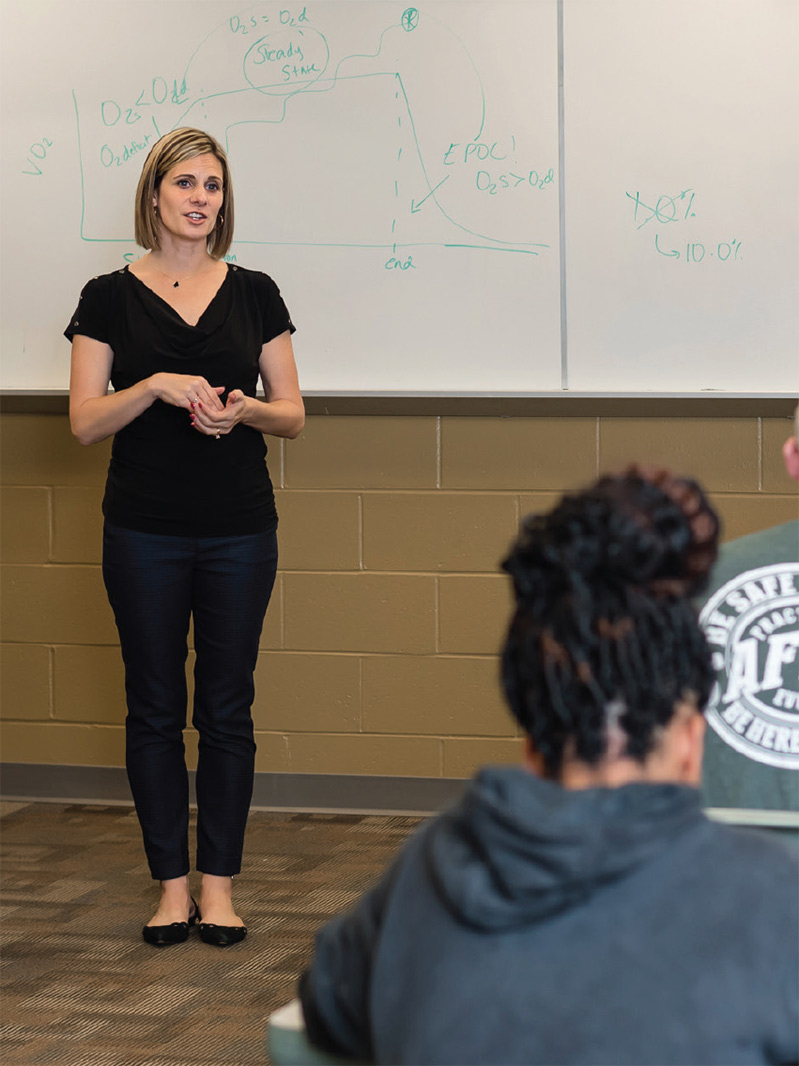When I first started working in the field of exercise oncology, I (like most people)
was skeptical.
Honestly, I didn’t think exercise would be helpful for anyone who was undergoing
cancer treatment. I didn’t even think they would be well enough to give exercise a
try.
I continued with this skepticism for the entire first year of my doctoral program.
Every day, for an entire year, I would go to work and train my patients. Sure, I could
see that they were getting stronger, but I found myself rationalizing it away. I’d
think things like “Maybe their prognosis isn’t that serious”….”Maybe they’re just
having a good day”….”Maybe they were super healthy before their diagnosis and just
have a higher tolerance than a normal person”….
Never once did I ever consider that perhaps it was exercise that was making the
difference.
(Mind you, I was in a doctoral program, working toward a Ph.D. in Exercise
Physiology at the time….)
Then something happened during my second year of school that changed
everything.
You see, I had taken up a love of rats.
Creepy, yes. But totally true.
On campus, we had a lab where we did animal research. (Have I mentioned I’m a
vegan? Maybe now’s not the best time to talk about that…)
In this lab, we had lots of little white rats. Sprague Dawley rats, to be exact. My lab
partner and I built a special treadmill for these little guys. We would create exercise
protocols for them to complete. After that, we would give them chemotherapy and
then test their heart function. We also had a different group of rats who did not
exercise, but still got the same dose of chemo. We tested their cardiac function too,
for comparison purposes.
Initially, these exercise protocols consisted of 5 bouts of exercise each week, for 30
minutes at a time, for 12 weeks. This is consistent with existing exercise guidelines
set forth by the US Surgeon General and several governing bodies in our field. At the
end of the 12 weeks, the rats would receive one dose of chemotherapy. Five days
later, we would measure their heart function against the group of sedentary rats.
So basically we were comparing the hearts of exercise-trained rats to sedentary rats,
after both received the same dose of chemotherapy.
As you could imagine, the exercise-trained rats always had the stronger hearts.
Every. Single. Time.
But wait – this is NOT the ah-ha moment I was talking about!!
Because, I feel like I already knew that. Don’t we all?? If you exercise train, your
heart will get stronger. I think I learned that in my first grade PE class….
So if I’m being completely honest, these studies never really impressed me.
At the time, 85% of the patients we worked with were sedentary before their cancer
diagnosis.
In other words, 85% of our patients had not just completed 12 weeks of exercise
training before getting their chemotherapy.
So, what about them? Should they delay the start of treatment by 12 weeks so they
can go exercise and get ready for chemo?? Obviously, this was not a realistic
solution!! I found myself getting frustrated because I just didn’t understand how this
research would really help anyone.
So, one day, my lab partner and I decided to try a different approach. Something that
would be more clinically-relevant.
We took a group of rats – all of which were previously sedentary. Just like the
majority of the patients we worked with.
These rats completed ONE BOUT of exercise.
One bout. 60 minutes. That was it.
The next day, we gave them chemotherapy.
Five days later, we measured their heart function. Again, we compared it to a group
of sedentary rats.
Well, who would have guessed it, but that one bout of exercise was actually
cardioprotective. Those animals who exercised ONE TIME had stronger hearts than
the animals who didn’t.
This was the study that changed my mind. From this moment on, I began telling
everyone I knew who had cancer that they should exercise. This study is why I decided to dedicate my career to this cause.
Because even if you have never exercised a day in your life before your cancer diagnosis, one bout of exercise will
still help you!
Right about now, I would imagine that all the skeptics in the room are thinking one
thing. These were rats, right? How does this translate to humans??!
Surprisingly well, actually. In fact, just last year (15 years after I published my first
study on this topic), a group in Sweeden measured the effects of ONE BOUT of
exercise in women with breast cancer. Their findings? ONE BOUT of exercise was
followed by an immediate improvement of common chemotherapy-related side
effects.*
I cannot stress the importance of this enough.
If you are reading this and you are battling cancer. If you think you’re too far gone
because you have never exercised a day in your life. If you are feeling sick and tired,
and are just plain sick and tired of feeling sick and tired….Let this be a motivating
factor for you to get moving!
All we are asking for is ONE bout of exercise. What do you have to lose?!
*Johnsson, A. et al. A Single Exercise Session Improves Side-Effects of Chemotherapy
in Women with Breast Cancer: An Observational Study. BMC CANCER (2019)
19:1073.

